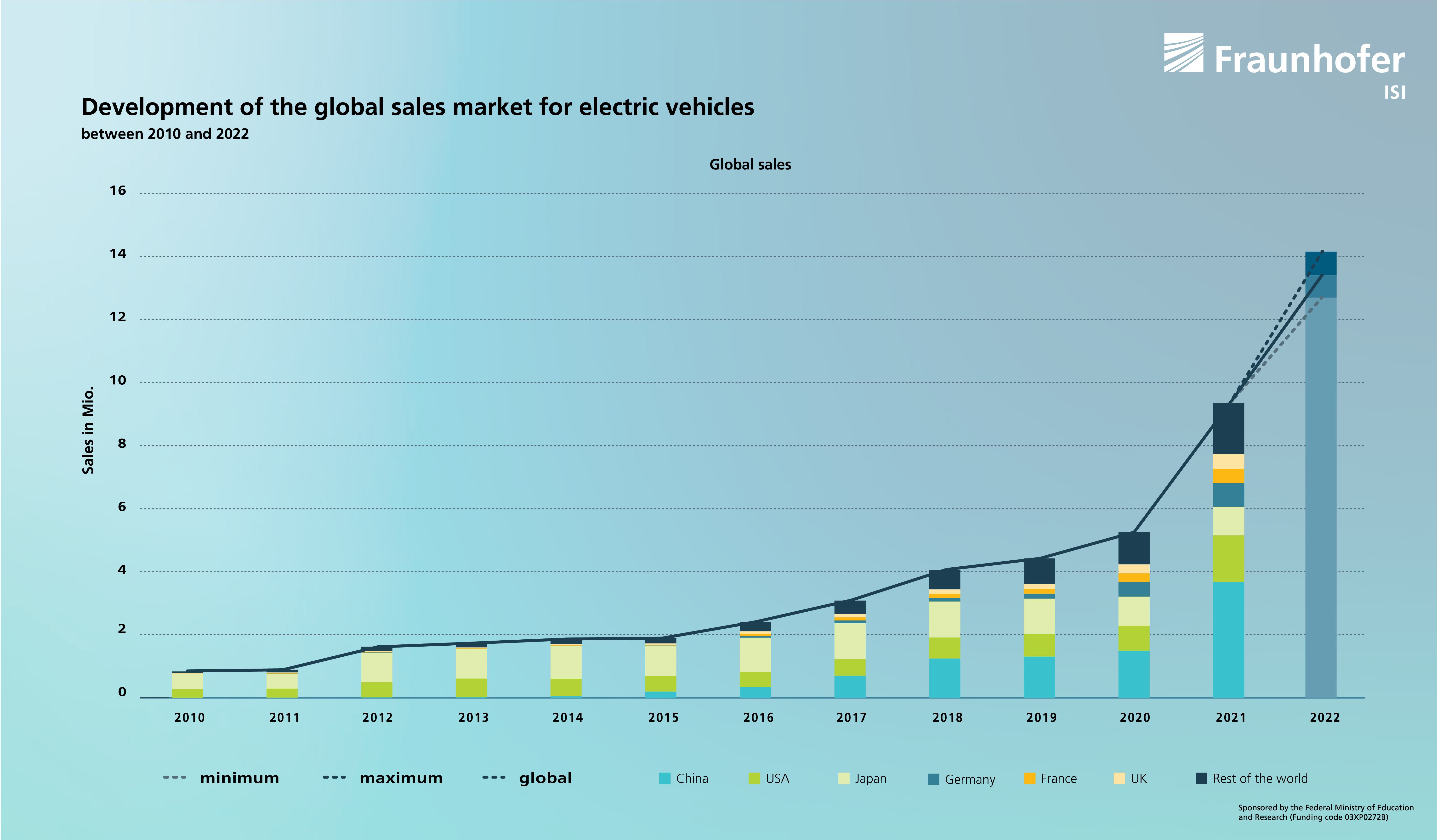E-mobility: How the global electric vehicle market has developed – and how it could continue
The global sales figures on the electric car market are clearly developing in one direction: upward. An analysis of the individual models and countries shows differences. In addition, a forecast for 2022 is already possible.
The sales figures for electric vehicles are reaching new record levels year after year. Current political efforts are responsible for this in no small part. In the recent past, financial incentives in particular have made the purchase of vehicles more attractive. Examples include purchase incentives in Germany, France, Luxembourg, Japan and China. Other countries, such as Norway or the USA, have reduced taxes as a financial incentive.
Electric vehicles include pure battery electric vehicles (BEV), vehicles with hybrid drive concepts (HEV) or plug-in hybrids (PHEV), and vehicles with fuel cells (FCEV). Together, these vehicle types are also referred as xEV. By far the largest proportion of these vehicles today are fitted with lithium-ion-batteries.
Development of global sales figures
Between 2010 and 2021, global xEV sales figures increased more than tenfold from around 838,000 to over 9,345,000. While HEV, led by the Toyota Prius, accounted for the largest market share among xEVs in 2010 (99.6 percent), BEV (47.4 percent) are the most sought-after models in 2021. Best-selling xEV model in 2021 was the Tesla Model 3, followed by the Wuling Hongguang Mini and the Tesla Model Y.
In 2022, the numbers continue to rise. Sales figures of around 13.4 million vehicles could be achieved by the end of the year. Looking at the sales figures until the end of the 3rd quarter, the Tesla Model Y and 3, as well as the Wuling Hongguang Mini, will again have the highest sales figures.

In Germany, the increase in sales figures was again significantly stronger than the global trend. Whereas fewer than 6,000 vehicles were sold in 2010, the figure last year was more than 750,000. Germany is the fourth-largest vehicle market in terms of sales figures, after China (3.67 million), USA (1.49 million) and Japan (903,000).
The historical dominance of Japan and the hybrid models produced and sold there, primarily by Toyota, is also evident in the development of sales figures over time. These vehicles were also sold in large numbers in the USA. It was not until the middle of the last decade that the supremacy of the Chinese market became established.
Why battery capacity is increasing
Due to the larger battery in BEVs compared to HEVs and PHEVs, falling cell costs and optimized cell chemistry and cell integration, the average battery capacity installed in vehicles increased from approx. 1.4 kWh in 2010 to approx. 30 kWh in 2021.
At the same time as the number of vehicles is increasing, the demand for battery cells for passenger cars has risen disproportionately from around 1.2 GWh in 2010 to almost 300 GWh in 2021. For 2022, it can be forecast that cell demand will rise to around 400 to 450 GWh worldwide. The vehicles sold in Germany had a combined cell capacity of approximate 26 GWh. The battery demand of passenger cars thus causes by far the highest cell demand in Germany.
German automakers in international comparison
The strength of the German automotive industry is reflected on the one hand in the global sales figures of OEMs in 2021, but also in the required cell demand. A total of approximately 1,146,000 vehicles from German manufacturers were sold in 2021, of which approximately 339,000 were sold in Germany. The larger part serves the international market. The most important foreign market is China (207,000 vehicles sold in 2021). Added together, German OEM vehicles require battery cells with a total capacity of approximately 50 GWh.
The international comparison confirms the strong market position of individual German manufacturers. VW has the highest German battery demand. The required capacity in 2021 was approximately 18 GWh. More cells than VW were only required by Tesla (64 GWh). Third place in the international comparison of manufacturers for the greatest energy storage demand is the Chinese OEM BYD (18 GWh), followed by BMW (just under 12 GWh). Audi and Mercedes-Benz complete the top 10 companies with requirements of 7.5 and 7 GWh each in eighth and tenth place.
Announced emission targets, both from individual countries (e.g. combustion engine phase-out in 2035 in the EU) and from manufacturers (70% electric vehicles from VW by 2030), indicate that the growth of the market will continue.
Note: The sales figures used come largely from the industry service provider MarkLines. These data and thus also the forecasts above tend to be very conservative. In addition, cell capacity is not available for every single model sold. The actual values for both the sales figures and the required cell capacities are therefore higher than the values given. European manufacturer models or also sales markets have better data availability than Chinese ones, for example. Further information, e.g. on battery size, comes from various sources such as the European Automobile Manufacturers Association, the European Alternative Fuels Observatory, the ADAC and other market and technology studies, OEM websites and other online sources.
The data used in this article comes from the BEMA2020 research project, which is funded by the German Federal Ministry of Education and Research (grant number 03XP0272B).
![BMBF_CMYK_Gef_M [Konvertiert]](/en/blog/themen/batterie-update/e-mobilitaet-entwicklung-globaler-xev-fahrzeugmarkt/jcr:content/fixedContent/pressArticleParsys/textwithasset_2082792882/imageComponent/image.img.jpg/1669109419622/BMBF-gefoerdert-2017-en.jpg)
